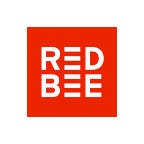Clients also have a responsibility for the mental health of their agencies
Last week Campaign published a passionate response by Tim Lindsay, chairman of D&AD, to its own recent articles about burnout and stress in creative agencies. Tim’s central argument was simple and stark: adlanders work long hours because clients don’t pay their agencies enough money. He singled out, in particular, marketers who (in his words) “cave in to their procurement and finance directors…who, frankly, bully their agencies into submission”.
For agencies, he went on to say, “it’s very hard to resist…it’s easy to say, when taking on a client you know will be unprofitable, that ‘it’ll make a contribution to overheads/we can handle it using existing resource/insert your own excuse here’”.
As Tim’s article was being posted, a discussion was happening at Red Bee Creative involving almost exactly those same words. We had been shortlisted for a creative pitch after having submitted an RFI response (and everyone knows how long they take to do properly). We had to decide whether or not to proceed. There were strong voices in the virtual room in favour, but we had a couple of reservations and questions.
The client was a charitable organisation. One with an important cause that we would have liked to have supported. The requirements of the brief were extensive. There were multiple stakeholders. And expert advisors. The budget was tight, had to stretch over an extended period and had to deliver measurable behavioural change. The best-case scenario was to make a positive difference to the cause with high-profile creative work and, you’ve got it, make a (small) contribution to overheads.
Now, we pride ourselves on being a can-do agency but a couple of things were nagging away at us. Firstly, there was a strong implication in the brief that agencies who could garner pro-bono help amongst their industry networks would be looked upon favourably. Secondly, the client was a little unclear on the number of competing agencies on the “short” list. At first we thought five, but we decided to probe further. It turned out to be nine, with only a much smaller sub-set likely to be invited to make a final presentation.
We stared at this challenge long and hard. We wanted to take it on. We love competition when it’s fair and reasonable. But the conditions of this pitch were far from reasonable. At a time when everyone in our team, as with so many creative agencies across the globe, has been working in almost total isolation in front of the Zoom app for well over a year, starved of the daily personal interactions that fuel the best creativity and struggling to separate their work lives from their home lives, we were being asked to deliver our best work in competition with eight other teams, all likely to be dealing with similar challenges. There was a decent chance that some great thinking and original creative ideas would end up buried forever in a downloadable PDF that would never be shared with the client team in “person”, even on a screen.
Add to that the pressure of thinking that the best way to give ourselves a real edge would be to persuade an ensemble of friends, contacts and suppliers in the industry to devote some of their own time or expertise or facilities for no, or little, cost. And why would they do that? Because they believe in the cause too and simply want to help? Because their own businesses are under pressure and they feel they can’t say no to a marginal contribution to their own overheads? Or because they suspect that saying yes to us on this occasion might put them in a favourable position for the next (fee-paying) project? And so the toxic domino effect would go.
We came to the reluctant decision to decline the invitation to pitch, having already invested a fair amount of emotional energy into the project. Our team was left feeling disappointed and deflated. We knew we could have done the job brilliantly and even had a prototype campaign idea that our lightning-fast ECD started to sketch out in the pitch qualification discussions. But we pulled out. We’ll probably never know if the client goes ahead with an 8-way pitch or drags a ninth agency off the subs’ bench. As the old adage, revisited by Tim Lindsay, goes, clients get the advertising they deserve.
There’s a punchline to this true story. Can you guess the charity’s cause? Tackling the mental health crisis in a specific industry sector (not a million miles from our own). No, really. One for the “you couldn’t make it up” collection.
We’re with Tim Lindsay. Burnout and stress in adland is undoubtedly due, in no small part, to the relentless, procurement-driven downward pressure on fees and margins. But it goes further than that. Client behaviour like this also has a big negative impact. Now, more than ever, if marketers truly want an agency to produce work of the highest quality they need to behave in ways that encourage the creative process to flourish and not add to the pressure that almost everyone in the creative industries is currently feeling.
Andy Bryant, Managing Director, Red Bee Creative
